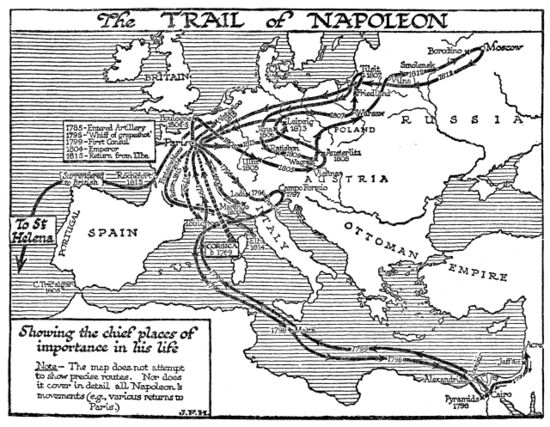imported>Chunbum Park |
imported>John Stephenson |
| (53 intermediate revisions by 4 users not shown) |
| Line 1: |
Line 1: |
| == '''[[Osteoporosis]]''' ==
| | {{:{{FeaturedArticleTitle}}}} |
| ----
| | <small> |
| As defined by the National Osteoporosis Foundation:
| | ==Footnotes== |
| {|align="center" style="width:90%;font-size:98%;" | |
| |
| |
| <font face="Gill Sans MT">Osteoporosis, or porous bone, is a disease characterized by low bone mass and [microarchitectural] structural deterioration of bone tissue, leading to bone fragility and an increased susceptibility to fractures, especially of the hip, spine and wrist, although any bone can be affected.</font><ref name=fastfacts>National Osteoporosis Foundation (2005) [https://docs.google.com/viewer?url=http%3A%2F%2Fmedschool.creighton.edu%2Ffileadmin%2Fuser%2Fmedicine%2Fimages%2FCreighton_FIRST%2FOsteo_Spotlight%2FFast_Facts.pdf].</ref>
| |
| |}
| |
| | |
| The increase in fragility results from both low bone mass and impaired bone quality.
| |
| | |
| Emphasizing the factor of ‘bone strength’, a factor in addition to and distinct from low bone mass, and the consequent increase risk of sustaining a fracture, a [[National Institutes of Health]] (NIH) Consensus Development Panel on Osteoporosis Prevention, Diagnosis, and Therapy has defined osteoporosis in 2001 as
| |
| | |
| {|align="center" style="width:90%;font-size:98%;" | |
| |
| |
| <font face="Gill Sans MT">a skeletal disease characterized by compromised bone strength predisposing a person to an increased risk of fracture. Bone strength primarily reflects the integration of bone density and bone quality...</font><ref name=NIH2001> NIH Consensus Development Panel on Osteoporosis Prevention, Diagnosis, and Therapy. (2001) [http://dx.doi.org/10.1001/jama.285.6.785 Osteoporosis prevention, diagnosis, and therapy]. ''JAMA'' 285(6):785-795. PMID 11176917.</ref>
| |
| |}
| |
| | |
| Primary osteoporosis can be of two major types: postmenopausal osteoporosis (osteoporosis, postmenopausal) and age-related or senile osteoporosis."
| |
| {|align="left" cellpadding="10" style="background:lightgray; width:35%; border: 1px solid #aaa; margin:20px; font-size: 93%; font-family: Gill Sans MT;"
| |
| | Osteoporosis, which literally means "porous bone", is a disease in which the density and quality of bone are reduced. As the bones become more porous and fragile, the risk of fracture is greatly increased. The loss of bone occurs "silently" and progressively. Often there are no symptoms until the first fracture occurs.
| |
| : [http://www.iofbonehealth.org/patients-public/about-osteoporosis/what-is-osteoporosis.html —The International Osteoporosis Foundation (IOF)]
| |
| |-
| |
| | Osteoporosis means “porous bone.” If you look at healthy bone under a microscope, you will see that parts of it look like a honeycomb. If you have osteoporosis, the holes and spaces in the honeycomb are much bigger than they are in healthy bone. This means your bones have lost density or mass. It also means that the structure of your bone tissues has become abnormal. As your bones become less dense, they become weaker.
| |
| : [http://www.nof.org/aboutosteoporosis/bonebasics/whatisosteoporosis —The National Osteoporosis Foundation]
| |
| |}
| |
| Although more common in women, osteoporosis may occur in males.<ref name="pmid18385499">{{cite journal |author=Ebeling PR |title=Clinical practice. Osteoporosis in men |journal=N. Engl. J. Med. |volume=358 |issue=14 |pages=1474–82 |year=2008 |month=April |pmid=18385499 |doi=10.1056/NEJMcp0707217 |url=http://content.nejm.org/cgi/pmidlookup?view=short&pmid=18385499&promo=ONFLNS19 |issn=}}</ref>
| |
| | |
| ''[[Osteoporosis|.... (read more)]]''
| |
| | |
| {| class="wikitable collapsible collapsed" style="width: 90%; float: center; margin: 0.5em 1em 0.8em 0px;"
| |
| |-
| |
| ! style="text-align: center;" | [[Osteoporosis#References|notes]]
| |
| |-
| |
| |
| |
| {{reflist|2}} | | {{reflist|2}} |
| |}
| | </small> |
Napoleon (Napoleon Bonaparte or, after 1804, Napoleon I, Emperor of the French) was a world historic figure and dictator of France from 1799 to 1814. He was the greatest general of his age--perhaps any age, with a sure command of battlefield tactics and campaign strategies, As a civil leader he played a major role in the French Revolution, then ended it when he became dictator in 1799 and Emperor of France in 1804 He modernized the French military, fiscal, political legal and religious systems. He fought an unending series of wars against Britain with a complex, ever-changing coalition of European nations on both sides. Refusing to compromise after his immense defeat in Russia in 1812, he was overwhelmed by a coalition of enemies and abdicated in 1814. In 1815 he returned from exile, took control of France, built a new army, and in 100 days almost succeeded--but was defeated at Waterloo and exiled to a remote island. His image and memory are central to French national identity, but he is despised by the British and Russians and is a controversial figure in Germany and elsewhere in Europe.
Rise to Power
Once the Revolution had begun, so many of the aristocratic officers turned against the Revolutionary government, or were exiled or executed, that a vacuum of senior leadership resulted. Promotions came very quickly now, and loyalty to the Revolution was as important as technical skill; Napoleon had both. His demerits were overlooked as he was twice reinstated, promoted, and allowed to collect his back pay. Paris knew him as an intellectual soldier deeply involved in politics. His first test of military genius came at Toulon in 1793, where the British had seized this key port. Napoleon, an acting Lieutenant-Colonel, used his artillery to force the British to abandon the city. He was immediately promoted by the Jacobin radicals under Robespierre to brigadier-general, joining the ranks of several brilliant young generals. He played a major role in defending Paris itself from counter-revolutionaries, and became the operational planner for the Army of Italy and planned two successful attacks in April 1794. He married Josephine (Rose de Beauharnais) in 1796, after falling violently in love with the older aristocratic widow.[1]
- ↑ Englund pp 63-73, 91-2, 97-8
